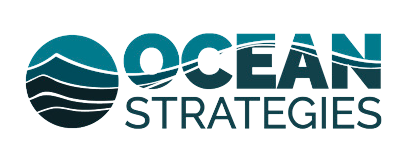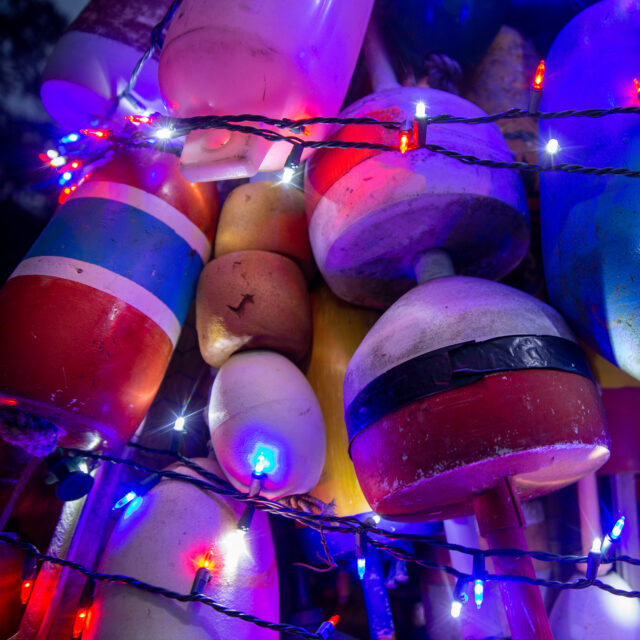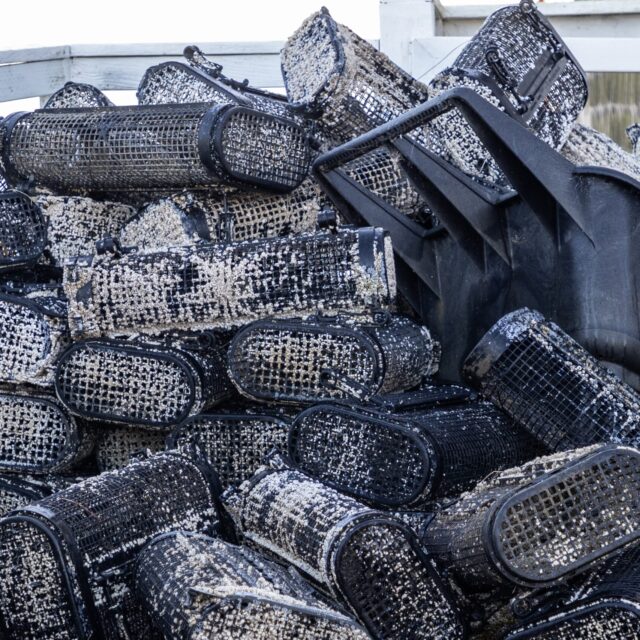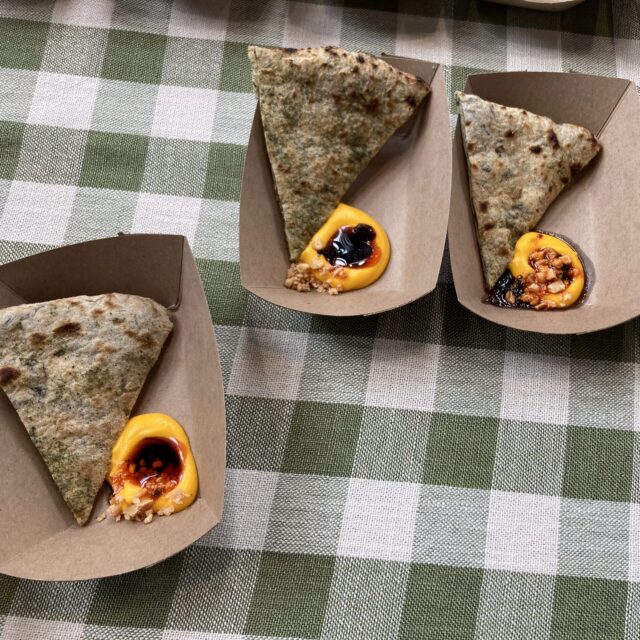
From the Big Island: Deep Dives and Long Runways to Community-Based Aquaculture
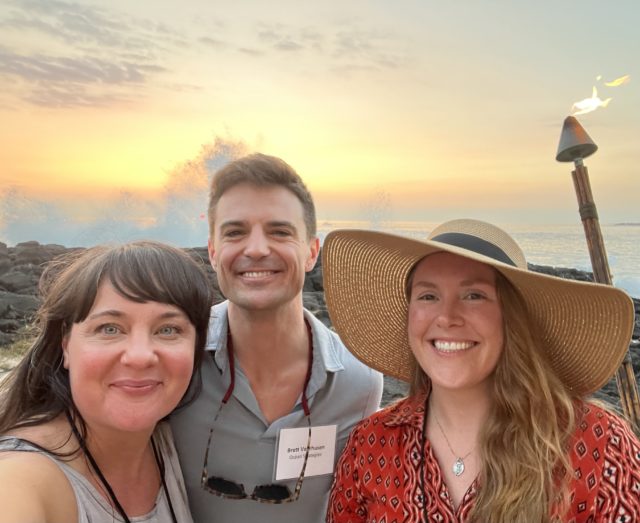
Ocean Strategies has been a fisheries-first firm since its inception. Our team consists of commercial fishermen and industry advocates. We are passionate about fishing communities and are dedicated to their heritage and preservation. We also believe in being honest about where we stand and being unafraid to declare our values.
That background and commitment has guided us through more than two years of investigating and understanding the multitrophic layers of domestic aquaculture — from its scope to its impacts on fishing communities and livelihoods.
We have been working primarily in Washington state, partnering with shellfish and seaweed farmers on roadblocks for permitting and communications, which has felt like a natural extension of our passion for thriving working waterfront communities.
This mariculture work has deepened our belief that commercial fishermen, industry leaders and in fact all working waterfront stakeholders should be aware of and engaged with policy changes affecting marine and fisheries spaces — including mariculture and aquaculture.
As cultural norms and policies change, it’s important to be at the table to represent fishing community voices with educated positions on the many forms of aquaculture. We couldn’t find anyone else tracking and reporting on these topics specifically for a commercial fishing audience, so we sought to fill that gap. Our quarterly Aquaculture Policy Reports synthesize regional and national updates on policy so fishermen and fisheries leaders can track what’s happening, what’s important, and have access to educational tools to stay up to speed.
That work also led us to join more than 20 other leaders (including fisheries reps) from around the country for an educational tour of Hawaii’s historic Native fish ponds (loko i‘a) in addition to new infrastructure that is expanding opportunities for the cultivation of fish for food as well as for the ornamental trade.
This trip was an opportunity to see these operations firsthand and have some of the hard conversations about the realities of farming and harvesting finfish — whether you’re using a traditional method or inventing new tools for production.
What we learned was complicated and fascinating, which surprised none of us.
What we took away from our experiences at Ocean Era and Blue Ocean Mariculture, in particular, is that it’s possible to do finfish aquaculture right, but it’s critical to be realistic about the opportunities, hurdles, and future of the industry. This model is not easily replicable.
Dick Jones, CEO of Blue Ocean, noted that success comes in being able to replicate the process.
This is our team’s perspective on the most critical components of that process and a summary of what we learned.
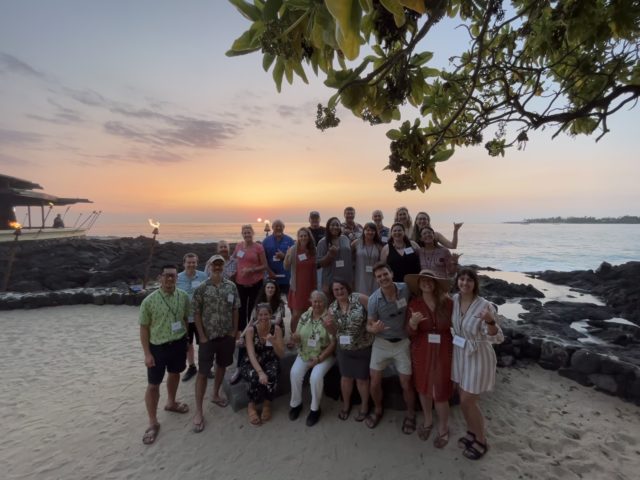
Promote Community Outreach
It may seem simple, but it takes commitment and dedication over many years to set aside traditional business goals in order to ensure that whatever you build also works for the community that will house the project and host your business.
Neil Sims, founder of Ocean Era and a marine biologist with more than 30 years of experience in aquaculture research and development, started with a community approach on the Big Island in Hawaii that could be considered the gold standard. Sims had a range of options for potential species to grow just off the coast in the nearshore, deep ocean waters of Kailua-Kona. But he didn’t settle on one until he got feedback, ideas and acceptance from community leaders over several years of outreach.
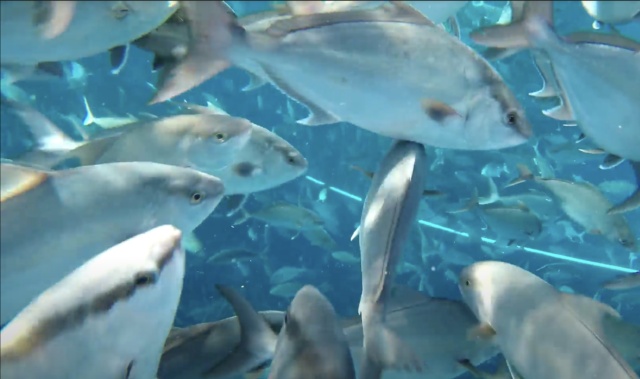
The premium Kanpachi that Blue Ocean Mariculture cultivates at NELHA (the National Energy Laboratory of Hawaii Authority) is the product of those years of research, which revealed that the fishery for kanpachi, or longfin yellowtail, had fallen away as the result of a parasite that was affecting the local biomass.
As luck would have it, the fish not only spawns well in captivity, but growing it to just past the vulnerable stage in shore-based tanks, then transporting it to the deepwater cages offshore prevents parasitic infiltration into the Blue Ocean stock.
Investing in community knowledge and feedback helped Blue Ocean find the perfect candidate for the business as well as for the island and its people. As Sims says, “Kanpachi chose us.”
Be Flexible
Part of community outreach and feedback is not being married to specific outcomes, either short or long term.
Sims is a bit of a mad scientist, in the best possible use of the term. He clearly thrives on the experimentation of finding the right fit for the place and the market. That is a niche that requires lifelong curiosity, optimism and constant ego-checking.
“I’ve never before met someone who reinvented the wheel and yet managed to be humble, open, honest and forthright,” said Jes Hathaway, senior consultant for Ocean Strategies. “Neil Sims is all of these things. Like any responsible and respectable leader, he stopped first to listen to community leaders and members, and developed his plan from there.”
Sims has now been in Hawaii for more than two decades, still thriving on the passion that sent him there and the compassion that drives his desire to find solutions to global seafood production hurdles.
“What impressed me the most was the intentional time and process Blue Ocean Mariculture embarked on to get it right, by learning from Hawaiian people, culture and industry,” said Ocean Strategies Principal Brett Veerhusen. “My thinking is evolving as humanity also evolves. And the aquaculture industry needs to set a higher standard for itself in this aspect. For example, accepting that the Alaskan Constitution bans finfish farming because Alaskans don’t want it. Neil Sims and Dick Jones have set the bar high. Now it’s time for the rest of the industry to do a better job of listening to local people.”
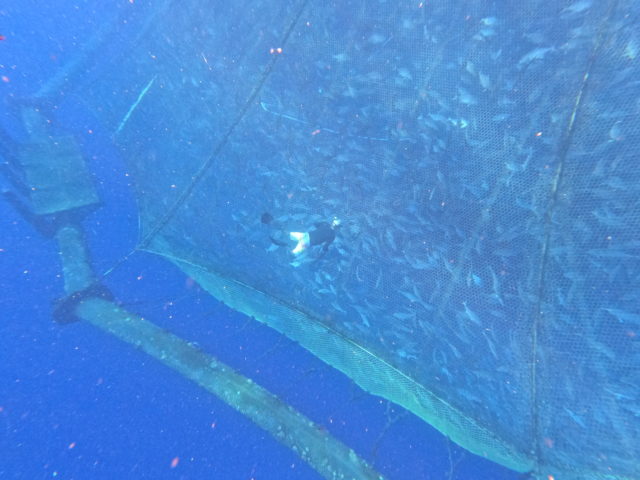
Investment Flows Both Upstream and Down
What started with Sims in 2001 has expanded to a 70-company facility — including an incubator on site — with built-in infrastructure that enables start-ups to hook up to the deep-water inflow. Think: co-working space for aquaculture labs. And there’s room for more.
This infrastructure supports a growing aquaculture industry in Hawaii, including partnerships with the University of Hawaii at Hilo and the Pacific Aquaculture & Coastal Resource Center extension program.
In keeping with the way of life in Hawaii, many of the working spaces at NELHA are outdoors or open-air. Sims now occupies one of those outdoor labs as the founder of Ocean Era, and Jones leads the current phase of Blue Ocean Mariculture as CEO, also onsite at NELHA.
“We see our role as linking the economic and social elements to the ecology of Hawaii,” says Jones.
Sims notes that without Jones’s leadership, Blue Ocean would not have made it this far. Jones has helped the organization secure funding to take it to the next phase, but he’s also grown the partnerships that have enriched the community of operators at NELHA.
In many ways, Jones acts as a caretaker, leading Blue Ocean to its own critical grow-out phase. Next stop: Profitability!
On that note…
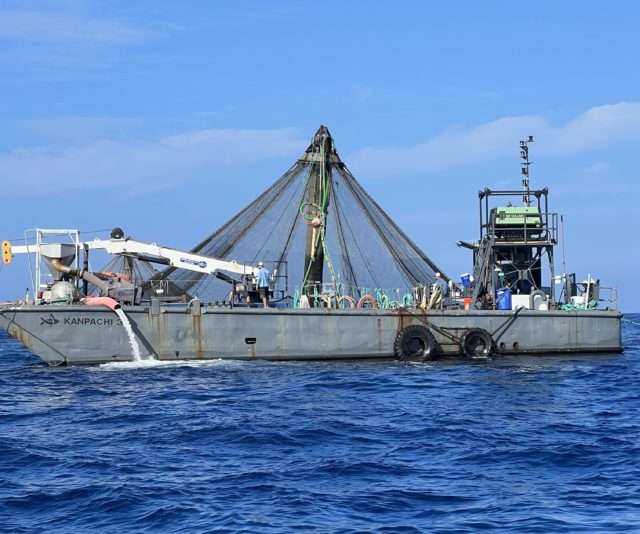
Accept Long Runways to ROI
It should come as no surprise that doing things the right way may also require a financial sacrifice. Proliferation of this model may necessitate designing new infrastructure, more incubators, new public-private partnerships or simply investments in well-intentioned aquaculture companies with track records for integrating themselves with the communities in which they operate.
It seems clear that the traditional model of finding a good site and a suitable species for grow-out needs refinement to evolve.
“Growing up fishing in Alaska for salmon, I watched my family — along with hundreds of others — face bankruptcy or leave the fishery entirely because of the glut of cheaper farmed salmon competing with our wild product. We need to acknowledge these experiences, accept the very real impacts farmed salmon had on traditional commercial fishermen, and learn how to not make the same mistakes,” explains Veerhusen.
Institute Neil’s Three M’s: Management, Modeling & Monitoring
Moving away from the old “If You Build It, They Will Come” model opens new pathways for community investment in aquaculture, and this works for mariculture, as well. In other words, it’s a model for fed and unfed, finfish and shellfish, large scale or small scale.
Sims notes that the industry recognizes – even welcomes – a robust management framework that provides assurances for all ocean stakeholders, including other aquaculture operators, that there will be responsible regulatory oversight of farm practices. Modeling is an essential element to be able to determine a priori the anticipated impacts on water quality and benthic substrate from various levels of biomass and densities. And monitoring is required to validate the model projections, and to ensure that the actual impacts are within acceptable limits.
Blue Ocean recently made a significant investment in its own array of monitoring buoys to track all manner of project-specific data to understand the marine conditions in and around their pens.
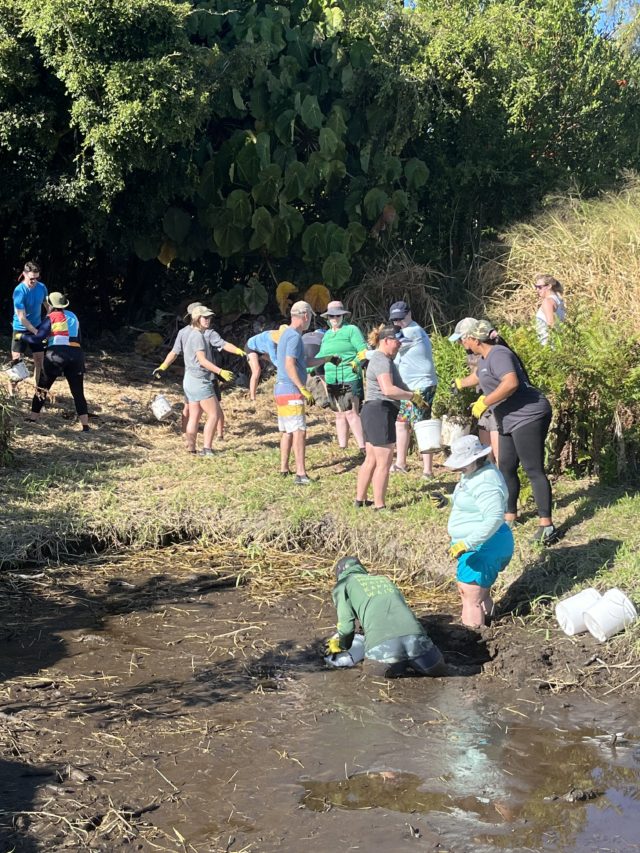
These Three M’s may have a modern fisheries management feel and sound, but they mirror the traditions of Native Hawaiian community fish ponds that have thrived in the islands for about 1,000 years.
The Kea’e, or guardian and caretaker of the fish ponds uses local knowledge and intimacy with the environment as a vital component of the work. The ponds — which can be a series of interconnected ponds — are stocked by the flow of the tides through hand-dug channels that connect the ponds to the ocean. Grates or other self-selecting devices keep the bigger fish inside the ponds, where they stay until they are chosen to feed a member of the community — whether that’s another fish, a local bird or the people who tend the ponds.
As one participant noted: It comes down to being a good neighbor.
The value of community care — meeting the basic needs of everyone in a community — and reciprocal respect among different communities and their leaders is an important part of the Aloha Spirit in Hawaii.
These values strongly reflected our experiences as members of tight-knit fishing and working waterfront communities from around the country.
“The most illuminating part of seeing offshore aquaculture operations in Hawaii firsthand was understanding how place-specific this development is. What works in Hawaii certainly won’t work in Alaska, and what works in Maine won’t work in the Gulf of Mexico” said Georgie Heaverley, policy and research consultant for Ocean Strategies. “Having commercial fishermen at the table to weigh in on the issues is necessary to ensure aquaculture development does not come at the expense of our wild harvest fisheries. That’s why we work so hard to stay connected on these things and report our findings for all stakeholders to see.”
Be Open to Redefining the Industry
Though the English name for the Hawaiian loko i‘a — fish ponds — may fit within the Western scope of aquaculture, the ponds are not always considered to be a component of aquaculture culturally. The fish pond is more like a community refrigerator, only one that stores the fish alive.
How we define aquaculture and mariculture projects may simply come down to community preference. It’s possible that an expansion of input into how aquaculture and mariculture projects are built and operated will improve the global perspective of the industry and the terms themselves.
On this visit to the Big Island, we were reminded that your word is worth a lot. And that within any community you value, you’re not worth much without it. Neil Sims understood that when he came to Hawaii to embark on this epic endeavor to change an industry one passion project at a time.
The value of one’s word is something we believe holds true in our fishing communities, as well. We appreciate and respect our partners, friends and trusted colleagues who have engaged with us on these topics. We value your insights, concerns, hopes and fears.
Our whole team would also like to thank our partners and friends for tolerating our penchant for saying the hard things and for trusting us with your own hard conversations. We know it’s the first step of a long journey to make better choices for all of our communities and the value of each voice within.
This summary is included in the Winter 2023 Aquaculture Policy Report. Click to subscribe.
Be sure to check out this write-up of the Hawaii site visit from Melissa Sanderson of the Cape Cod Commercial Fishermen’s Alliance: Hawaiian Aquaculture’s Lessons for New England
